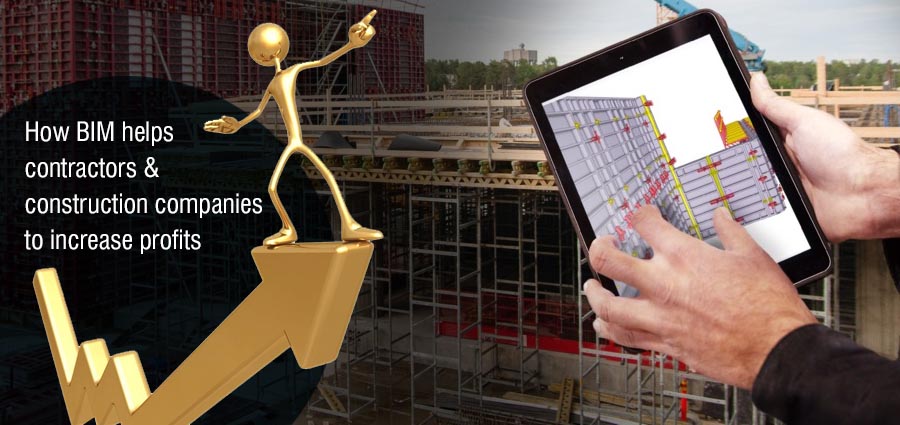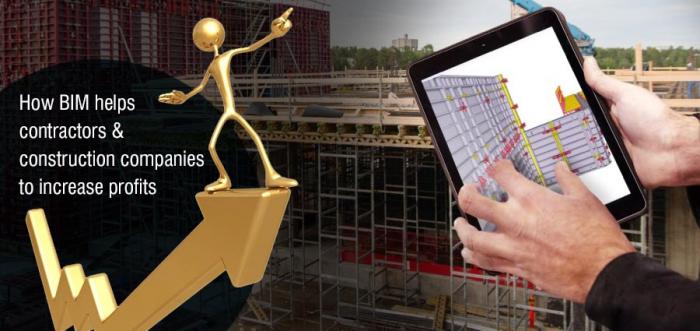

Construction industry struggles to swim across the cost of doing business as wide as an ocean, whereas the profit margins are usually razor thin. Immense competition, squeezed timelines and compressed budgets create further cost pressures push teams to do more with less. Such challenges make it mandatory for construction professionals to hunt for new ways and means to control building construction project costs and increase construction profits to grow. The advent of technologies and processes makes it all the more possible for them to decrease project costs and increase profits.
Enlisted are some of the best practices put at work by best contractors to increase construction profits:
Manage Construction Risk
The reason to include this point in the first place is that however successful a construction project might get, risks turning into reality deliver a knockout blow. If a single risk factor does not prove fatal, a combination of risks can certainly sink the construction project and even the construction company altogether. The construction project of a simple new house or a multi-level block office, it is complex and hence, are the construction risks that come with the project. Construction risk management is a must if a company is to be sure of survival and growth.
Construction project risks include:
- Contractual risk
- Financial risk
- Natural risks
- Occupational risk
- Project risk
- Stakeholder risk
- Competition
Legal claims and disputes prove costly while they also disrupt the process, incur additional and unwanted costs, damage reputation and delay schedules. Construction risks can crop up at any point across the project, including time and cost overruns, scope, budget, and schedule. BIM consulting companies are known for assisting contractors and construction companies, from the mammoth tasks of BIM implementation and BIM execution plans to routine task of construction document management to manage and alleviate risk. In case of any legal claim, they ensure that the documentation is complete, which helps in mitigating the cost and duration of the dispute and improve outcomes.
BIM workflows developed by these service providers, with required level of details (LOD) ranging from LOD100 to LOD500 as per COBie and IFC standards, streamline the construction management process for residential, commercial, industrial, educational and public building facilities. Project complexities are ever increasing, as owners demand efficiency and quality. Taking assistance of design and drafting experts ensures increased profits and competitive edge for contractors and construction companies.
Reduce RFIs
Construction projects generate approx. 9.9 RFIs – Requests for Information, per $1 million of construction costs. These requests may be in form of contractual obligations, agreements, drawings or specifications, which can certainly hold up the progress of the construction project, incur unwanted costs; ultimately making the project continues beyond schedules. Considering that the average cost of an RFI review and response is $1,000, this represents a significant impact on construction margins. A lot of professionals think that RFIs are an unnecessary evil, but owners, contractors and project managers know the importance of managing the RFI process to finish their construction projects properly and effectively.
One of the most prominent reasons for RFIs is the lack of collaboration and coordination between architects, engineers, and contractors. As these groups become increasingly isolated, the less overlap and interaction takes place between them. It means the builder at the end of the process will have to raise an RFI from someone further up the design chain, eventually leading to loss of time and working hours.
From 3D BIM modeling to 4D, 5D BIM to Revit family creation and MEP BIM services, the 3D BIM modelers ensure coordination, clash detection, scheduling, estimating, and on-site production control for architectural, structural and MEPF disciplines in the construction project.
With everyone working on a single model, a change in one view is automatically reflected in all other views, reducing the margin of error. Now notifications are delivered immediately to stakeholders, and responses provided almost immediately. 3D BIM modelers streamline communication and coordination between designers and builders to improve quality and accelerate delivery.
Reduce Rework
Delayed deliveries, damaged reputation and injured workers; are a few of the offerings of rework. Construction Industry Institute firmly believes that rework accounts for nearly 2% to 20% of a project’s total contract amount. Usually, rework is caused due to the errors and omissions across the design phase, or the correction of errors and clashes detected.
Data-rich 3D MEP models and 2D drafts are what MEP contractors, consultants and, HVAC contractors use to reduce rework and increase design coordination. Information-rich 3D MEP models and MEP coordination drawings prepared in Revit will help engineers and architects to efficiently design plans. 2D installation drawings, fabrication and shop floor drawings help construction professionals to use spatial arrangement at the construction site and quantity takeoffs with costs estimation. These features reduce the incidence of errors and omissions in the design phase. It also ensures that all involved in the project have their hands on the latest version of construction drawings such as markups, RFIs, and change orders.
Reduce Project Duration
A construction project might have come a long way from mitigating risks to reducing RFIs and rework, but if falters at delivering the project well within the deadlines, can lead to penalties and loss of incentives. Timeline inefficiencies are a part and parcel of traditional design-bid-build process, as drawings are required to be prepared twice, first for the bid and once again to make the designs constructible.
Working hand in hand with BIM experts for developing 2D CAD drawings from conceptual sketches, images and PDFs for floor plans and elevation drawings, the entire construction process is streamlined unbelievably. BIM service providers are experts at 2D conceptual drawings, planning drawings and technical drawings of a building, 3D CAD modeling and rendering for concept visualization and design collaboration and much more. 3D models facilitate coordination of the steps and processes, provide useful context to 2D drawings and ultimately deliver a more predictable path to project completion. Combined with the benefits of RFIs and rework, this has the added benefit of reducing delays and keeping the project on its timeline.
Final word
Construction projects are destined, not to ever go as exactly planned. With change orders, fluctuating material costs and unprecedented weather conditions impacting construction project budgets, it is really important that accurate costs estimates are prepared to effectively control the costs that can be managed to the best of the ability.
Though specialist at BIM technology, BIM experts instead of starting with modeling, initiate by collaboratively discussing design critical features with all project stakeholders and design team members. Their BIM workflow management techniques empower project teams to view the impact of individual designs on those of others and to resolve the conflicts based on this knowledge. This interoperability approach of BIM solution companies, have obvious time and cost benefits.


